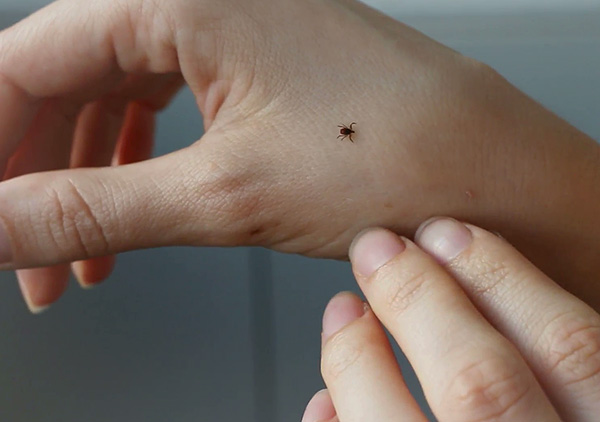
It is difficult to overestimate the importance of elementary measures of protection against tick bites: even with the current level of development of medicine, the bites of these parasites pose a real threat to human life in many regions of Russia.
For example, there is no absolutely reliable way to cure tick-borne encephalitis. The means available in the medical arsenal can increase the likelihood of a successful outcome after infection, but they do not guarantee a complete recovery. That is why in places where tick-borne encephalitis is spread, despite the vaccination of the population, several dozen cases of deaths from this disease are recorded annually, and even more people remain disabled for life.
There is no vaccine for another common tick-borne infection, Lyme borreliosis. Although the treatment of this disease is not considered very difficult (the disease is caused by bacteria and is treated quite effectively with antibiotics), borreliosis is not always diagnosed on time, and therefore severe irreversible complications often occur (primarily from the joints and heart).
Both of these diseases develop precisely after tick bites (tick-borne encephalitis can also be contracted through the milk of infected goats and cows).
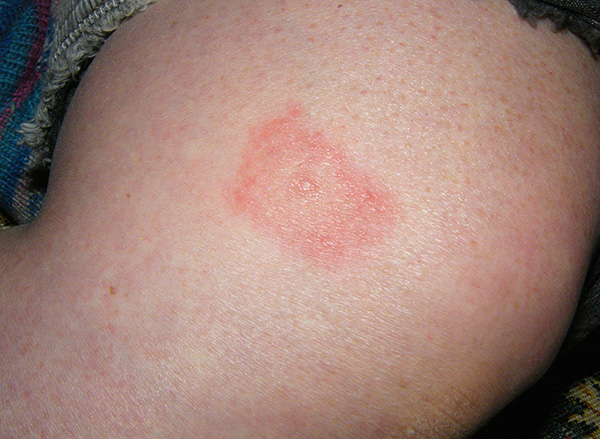
Thus, reliable protection against ticks is a guarantee of a safe stay in places where these parasites can be encountered with a high probability: in nature, in summer cottages, as well as in city parks and gardens.
There are quite a lot of means and methods that allow you to protect yourself from ticks, but not all of them are equally effective and convenient in a given situation. Next, we will see which of these measures can be useful in practice ...
When ticks are most active and protection from them is especially important
Tick season in regions with a pronounced change of seasons, it lasts about 6 months a year, in central Russia (including Moscow) - from April to September. Interestingly, this period does not increase in more southern regions. For example, in the south of Ukraine, in Central Asia, where warm weather sets in as early as March, and persistent cold sets in only in November-December, the tick activity season lasts about the same. That is, in March and November, bloodsuckers are practically not active.

On a note
In countries close to the equator, where the seasons change without significant temperature changes, ticks are active all year round.
In temperate climates, even during the warm season, tick activity is uneven. There are peaks at which the number of bites by parasites and visits to doctors about this increases sharply, and recessions when these incidents become noticeably less.
These peaks appear due to a rather strict rhythm life cycle of ticks at different stages of their development. After wintering, hungry nymphs and overwintered females are the most aggressive and attack their prey in the greatest numbers precisely in the first weeks after the completion of winter diapause. This peak occurs at the end of April-beginning of May.
At the next peak, summer, around July, nymphs that have molted into adults attack animals and people in order to feed before breeding.

Finally, in early September, the autumn peak begins, during which the nymphs feed on blood in order to have time to molt before wintering and go into diapause in a hungry state.
It is interesting
Hungry, not yet fed in the adult stage, ticks are the most tenacious and able to endure the most severe winters. In some species ixodid ticks engorged females also winter safely, while in others, adult individuals after saturation are not able to survive the winter.
The activity of ticks at different times of the day and in different weather varies. At night, they descend from the grass to the surface of the soil, and during the day, as the air warms up, they climb to the tops of the shoots of herbaceous plants and lie in wait for their victims here. As a result, people and pets are exposed to them mainly during the daytime. But at night they can also be picked up, although the probability of this is somewhat lower.
In cold weather and prolonged rains, the activity of ticks decreases, as well as in very hot, sultry weather (in the heat on the grass, the parasites face rapid dehydration, so they try to stay closer to the ground).

Thus, protection against ticks is not required in winter, as well as at the end of autumn, when the air temperature during the day is consistently below +10°C. And vice versa, when in the spring in the middle of the day the air warms up to 15-18 ° C, during excursions to nature it is already necessary to protect yourself from the bites of these parasites.
On a note
In different regions, the situation with ticks can vary dramatically. For example, in Siberia taiga ticks they actively attack people and animals already at an air temperature of about + 15 ° C, and in the Black Sea region, even in April at + 20 ° C, ticks can be difficult not only to accidentally pick up, but also to find them on purpose. You can find out when ticks are most active in a particular area from local residents who often visit nature - fishermen, hunters, foresters. They are well aware of the specifics of not only a particular region, but also individual lands in it - forests, plains, parks, and can give good advice on where to rest with caution. Tick activity can vary significantly even within closely spaced areas.
Places of the greatest concentrations of parasites
In wild and cultivated areas, ticks are most concentrated where their hosts are most often found. The vast majority of ticks that carry infections dangerous to humans mainly parasitize wild and domestic mammals - ranging from mouse-like rodents, wild rabbits, hedgehogs, hares, and ending with cattle. Knowing this, one can avoid such places during nature excursions, and in such places one should observe the greatest care and caution.
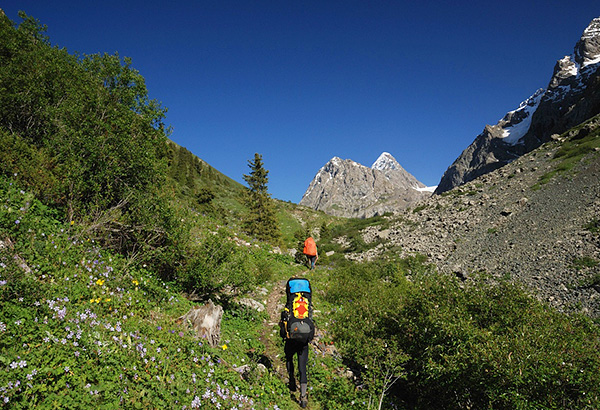
It is interesting
For any type of ticks that are carriers of tick-borne encephalitis or borreliosis, a person is not the main host. Individuals can attack people, a few of them can even completely feed themselves, but mainly due to the exceptionally high ability of a person to self-cleanse, none of the ixodid species has adapted to feeding only on a person. As a result, it is possible to “pick up” a parasite only for the reason that the tick takes a person for its main host.
The main places where ticks lie in wait for their victims:
- Trails used regularly by wild and domestic animals. On the grass and soil, hair and scent marks of animals remain here, which attract ticks. They can massively make their way here from distances of several tens of meters;
- Places of watering places and rest of animals;
- Places with high and dense grass, in which it is convenient for rodents and insectivorous mammals to hide;
- Habitats of rodent colonies - gerbils, ground squirrels, marmots;
- Regularly used pastures.
At the same time, ticks can also be located far from such places, but the density of their presence will decrease with distance from these zones. In any case, dense grass cover is favorable for parasites: it is easier for bloodsuckers to overwinter in it, here they have more chances to avoid meeting with a predator.

On a note
If there are places of accumulation of ticks, it is desirable to treat them at least once a year with acaricidal agents. In this case, the bulk of the parasites will die here, and new ones will appear at best only by the end of the season. Reviews show that such precautions should be taken, for example, in perennial raspberry bushes, on alpine hills and near artificial reservoirs with tall grass, near fences (if the grass outside the fence is not mowed, then ticks can accumulate here and easily migrate into the yard) .
In places of greatest accumulation, mites are found mainly on the tops of shoots of herbaceous plants, on the lower branches of small shrubs, on broad leaves of ground cover plants. Here they lie in wait for their victims, and sensing the approach of an animal, they spread their front legs to the sides, hoping to cling to the wool.
When meeting with a person, the parasite clings to clothes, hair on the legs, or skin.

From here follows the first rule: in order to reduce the risk of attack and bite of a tick, while being in nature, one should avoid places with high dense grass, as well as well-trodden paths of animals and places for their rest (such places usually have a distinct smell of livestock). On grassless areas - sandy "bald patches", rocky outcrops, salt marshes - there are a minimum number of ticks, and rest here will be safer.
However, even in relatively safe areas, it may not be possible to completely eliminate contact with parasites, and therefore special means should be used for reliable protection. And not only insectoacaricides (we'll talk about them a little later), since the main element of protection is the right clothes ...
How best to dress for tick protection
You can effectively protect yourself from ticks even with the help of ordinary clothes that any person has. To do this, it is not at all necessary to buy special anti-tick suits.
The main principle that makes clothing almost impervious to ticks is that it should leave a minimum of exposed areas of the body. This means that when going out into nature, you should dress so that your pants are tucked into your socks and your shirt is tucked into your pants. In this case, the parasite, which will catch on to the lower part of the leg, will first have to get to the person’s neck (or to the wrist), and before that it can already be noticed and removed.
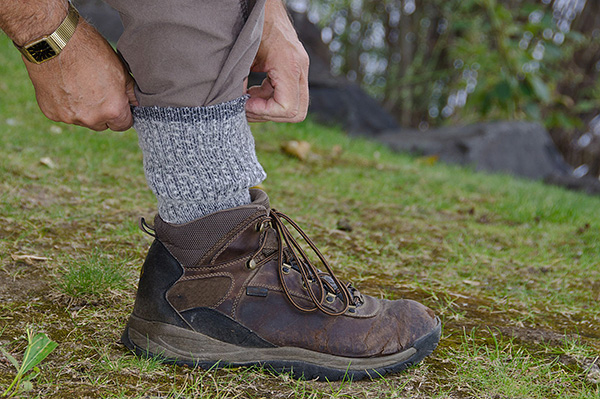
From here, by the way, another important point follows: clothing should be as light as possible - it is much easier to notice a tick attached to it in time.
On a note
Ticks are quite slow, and once on clothes, they can crawl over it for tens of minutes in search of open areas of the body. Moreover, even after getting on the body, the parasite usually sucked on not immediately - often he looks for a long time convenient for a bite. It also allows you to shoot bloodsuckers before they bite.
To further protect yourself, it is highly desirable that there are elastic bands on the sleeves of a shirt or sweater that will prevent a tick that has fallen on a brush from getting under clothes. Similarly, it is useful to insert a slightly tightened lace or light elastic band on the collar.
On a note
Ticks don't bite through pantyhose. However, they cannot be considered the best means of protection: although a tick cannot bite through them, rarely does anyone tuck underwear into pantyhose, and therefore the parasite can climb up to the waist and then bite into the stomach. In addition, ticks are poorly visible on tights.
It makes sense to treat all parts of the body that have remained open with special tick-repellent agents (repellents) and, additionally, inspect nature with one frequency or another. Obviously, the fewer open areas left, the less hassle.
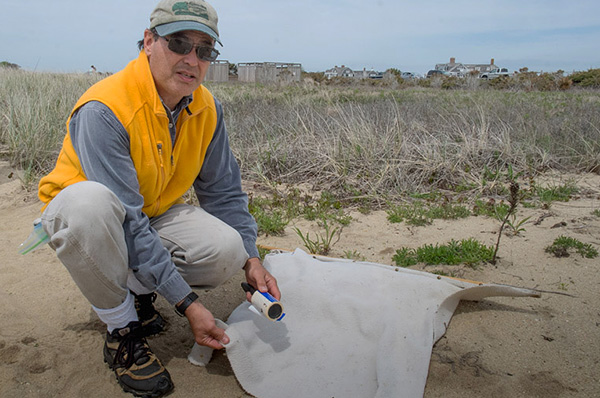
Protective clothing that keeps you safe from ticks may not always be comfortable on hot summer days when parasite activity is high. However, in some cases, here you really have to choose - either comfort or maximum safety.
Special anti-tick suits
The best option for clothing that protects against tick bites can be considered special anti-encephalitis and mosquito suits. In their manufacture, not only the features of protection against parasites are taken into account, but also ergonomics.
For example, all such suits have linings that allow you to tuck one element into another and provide complete protection against bloodsuckers. They also make cuffs on the sleeves and foot loops on the legs, preventing the pants from riding up when squatting.
Many models have special traps for ticks - folds into which parasites get when moving from the bottom up along the suit and from which they cannot then get out. Usually, these traps are treated with acaricide during manufacture - getting into them, the parasites die rather quickly. At the same time, the fabric treated with the product does not come into contact with the skin.
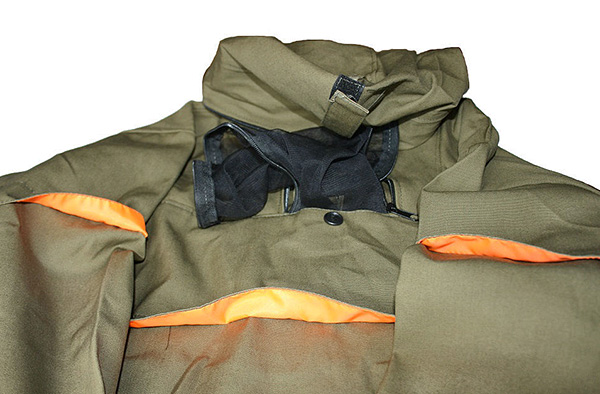
In addition, often an anti-encephalitis suit has a hood with a mosquito net, which protects a person, including from midges. In such clothes, it is enough to spray only the hands with a protective agent to avoid the bites of blood-sucking insects.
Many manufacturers produce costumes in all sizes, from children's. Usually, a model for a child has special bright contrasting inserts of orange or light green color - they are clearly visible even in the summer forest and allow you to quickly find a child who has moved away from his parents.
There are many such suits. The following examples can be considered as fairly good and well-thought-out models:
- Anti-encephalitic overalls Tourist-N. The classic version is light, one-piece (without division into a jacket and pants), with rubber cuffs on the sleeves and legs. The material of the jumpsuit is cotton (33%) and polyester (67%). Included with the jumpsuit is a mosquito net on the head. There are tick traps on the sleeves, legs and torso. The price of overalls is about 5000 rubles;

- Biostop Premium suit - consists of trousers, a jacket and a mosquito net.The bottom of the jacket has a lining that tucks into the pants. The material of both the jacket and trousers is 100% cotton treated with an oil and water repellent composition. The jacket and pants have large pockets and tick traps. The costume costs about 8,000 rubles;

- Biostop suit for children aged 6-12, available in different sizes. Structurally similar to the Biostop Premium anti-mite suit, it also has studs on the bottom of the legs to secure them and prevent bullying when squatting. Great for children who are taken with them to the forest for mushrooms or to the river for fishing. There are bright signal stripes on the right sleeve and left leg to help you keep an eye on your baby. You can buy it for about 5000 rubles.

Such suits and the like are a very reliable protection against ticks both in open spaces and in the forest, where parasites can be found on the leaves of plants and the lower branches of shrubs located at the height of an adult's belt. Their main advantage is a combination of high reliability with ease of wearing.
If you have such a suit, it is not necessary to use repellents, and you can even climb where ticks can be in very large numbers. That is, this is the best way to protect children and, for example, pregnant women from bites. It is anti-tick suits that are used as the only and quite effective protection by people who constantly work in the wilderness - foresters, lumberjacks, scientists working on the road.
Abroad, the tourism industry also produces special accessories for protection against ticks. For example, special “flashlights” on the legs are quite simple and effective:

They can also be worn over pants:
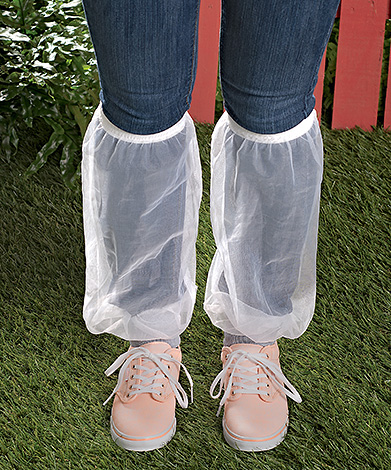
And some manufacturers even produce special pads with traps:
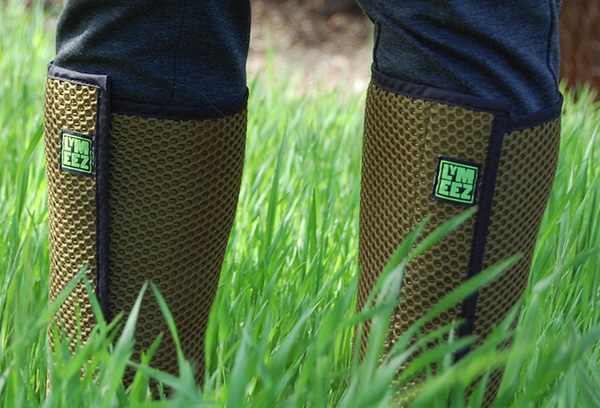
Such pads are sprayed with acaricide before going out into the wild. The agent fills the cells, and then, when the tick clings to such an overlay on the trousers, it climbs into the cells, trying to get close to the body, and dies from the action of the acaricide.
Here's what it looks like in practice:
On the other hand, costumes can sometimes be not very comfortable - for example, when hiking in the heat, or for a walk in a city park. In addition, such costumes are not produced, for example, for one-year-old children.
The most effective repellents
Mite repellants are usually ready-to-use aerosol preparations that are sprayed from a can directly onto the skin or clothing. The composition of such products includes substances that repel ticks and various insects, and while the substance remains on the treated surface, the parasites either do not sit down at all and do not climb onto it, or after accidentally fixing, they immediately disappear here.
On a note
For example, ticks can grab hold of hair on a person's leg or fabric on a leg. But if the leg or trouser leg was previously sprayed with a repellent, then the parasite will disappear in a few seconds.
In the most effective (and most unsafe for health) repellent preparations, the active ingredient is DEET - diethyltoluamide. Means based on it have a long duration of action (up to 4-5 hours on the skin and up to 2-3 days on clothes), but at the same time they often cause allergies and skin reactions, and with constant use for more than 2 weeks, they can have an undesirable effect on nervous system. Therefore, it is better not to use DEET-based products for young children and pregnant women.

Other substances used in tick repellent preparations (a number of them not only repel, but also kill parasites):
- dimethyl phthalate;
- Permethrin (typical insecticide);
- Rebemid;
- Benzoylpiperidine;
- Oksamat;
- Picaridin.
As a rule, aerosols (less often - creams) based on them are used when protection against ticks is needed for a short time (for example, for 2-3 hours of walking in nature), and the drug itself is applied to small areas of the body that remain open - on the neck , hands, face.
On a note
Less commonly, aerosols are produced on the basis of essential oils. They are less effective and protect against ticks relatively poorly.
As examples, consider several preparations for protection against ticks:
- DETA-Prof, which contains 30% DEET, is a lot, and the product provides reliable protection while it remains on the surface (up to 4-5 hours on the skin and up to a week on the fabric). It is sold in bottles of different sizes, the most economical of which is 270 ml (its price is about 200 rubles). Judging by the reviews of experienced people, it reliably protects not only from ticks, but also from mosquitoes, fleas, horseflies and other components of the forest and swamp midges;

- Breeze-Anticlesh based on alphacypermethrin. Significantly safer for people, it can be used regularly for up to a week in children from 3 years old, but also less effective - in accordance with the instructions for use, the period of protective action when used is 2-3 hours when applied to the skin;

- Gardex Baby is also an alphacypermethrin-based product, which, however, can only be applied to clothing. A 100 ml bottle costs about 150 rubles.

Children under one year old, especially newborns and infants, should not be treated with any kind of insect repellant at all. It is wiser to dress them in sufficiently dense clothing, and in places with a high concentration of blood-sucking insects, either keep them in a stroller with a mosquito net (if the child is very small), or put a mosquito net in the form of a hood over ordinary clothes. For babies from a year old, clothes can be sprayed with some aerosols (this should be clearly stated in the instructions), but so that the product does not get on the skin.
Most of the folk remedies that are sometimes advised to use to protect against ticks are extremely ineffective. To some extent, they can reduce the likelihood of a tick attack, but they cannot reliably prevent its attachment. So rely, for example, only on vanillin, kerosene, lavender, etc. by no means worth the money.
It is important to remember that both aerosols and creams are quickly washed off with water (they are also washed away by sweat). If you applied the product to your trousers or bare legs, and then walked through the dew or forded a small river, then you need to treat your legs again.
Rules of conduct in the forest to help protect yourself from tick bites
Finally, tourists, geologists, expedition members and hunters have already developed and time-tested preventive measures that help protect themselves from tick bites and are quite effective even without the use of special means.
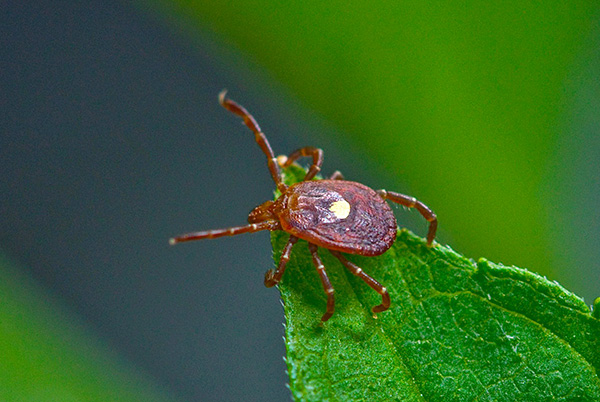
These are the preventive measures:
- Regular self-exams. They can be done literally every 5-10 minutes, and after a certain training, such examinations become a habit.During the period of time between self-examinations, the attached tick usually does not yet have time to bite and stick, and it is enough just to remove it from the skin (or from clothes) and throw it away. Moreover, if a tick is found on clothes, it will not reach the collar in such a short time and can be shaken off;
- Regular examinations of each other, allowing you to find ticks on the neck, behind the ears, on the back;

- Moving away from wildlife trails. This, by the way, is useful both from the point of view of safety and for hunting purposes - from 3-4 meters away from the side of the beast you can see and go unnoticed, which would be unlikely when meeting with an animal on the trail itself;
- Do not sit or lie down in thick tall grass. It is better to rest or make a halt on a stump, sandy spit, on a stone. If you lie in the grass, even in a special suit, then the tick will quickly be able to get close to your head;
- As a shelter for spending the night, use tents with a continuous anti-mosquito canopy. For a tourist camp, this is a necessity - you have to set up a bivouac every day in a new, possibly ticked, place, and the ticks themselves can quickly climb up the walls of the tent to the very ceiling. The canopy will reliably protect both from adult parasites and from small nymphs.
If a tick is found on the body or clothing that has not yet had time to stick, you can simply brush it off or remove it with your fingers. With such manipulations, he will not bite and will not cause harm, will not infect with any infection.
If the tick has already managed to stick, then it should be removed from the skin as soon as possible ...
What to do if the tick still stuck
It is during bloodsucking that an infection is transmitted from a tick to a person’s blood - viral particles of tick-borne encephalitis, borrelia and pathogens of rarer infections enter the wound with saliva. Therefore, if the parasite has managed to pierce the skin, then the probability of infection already exists, and the longer it sucks blood, the higher this probability.
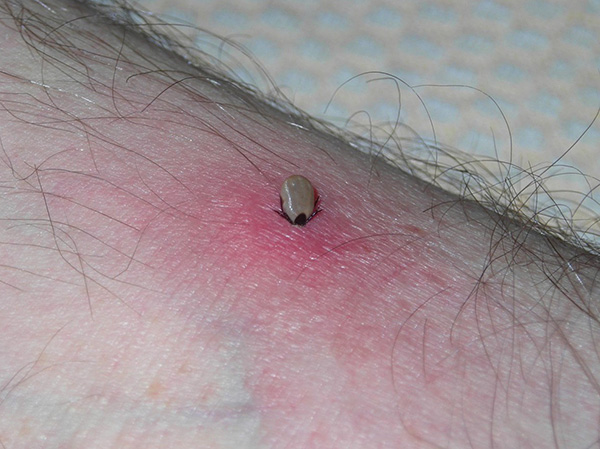
And this means that the sooner the bloodsucker can be removed, the more likely it is to stay healthy. And the speed of tick removal is much more important than the technicality of this procedure.
Ideally, the tick should be unscrewed with some kind of tickeder. Such devices allow you to do this in a few seconds without the risk of tearing off the body of the parasite from the head firmly fixed in the wound.

Nevertheless, if you don’t have a special tick-worm at hand, you need to take the parasite with two fingers and, without pressing on the body, try to unscrew it - when rotating, the fixation of its proboscis in the skin weakens, and it falls out (about which way it is better to twist and how it do it right, see separate article). If it was not possible to unscrew the bloodsucker in a minute, you can even just pick it up with your nails and pull it out.
Many people, when removing a tick, are afraid to tear off the body from the head and leave this same head in the skin. It is assumed that it will be difficult to remove it after that, and its presence in the skin is very dangerous.
Actually it is not. Even when a tick is simply pulled out of the skin, separation of the body from the head occurs very rarely, since in the main species that attack people in Russia, individuals either do not form a cement case around the mouth organs in the wound, or this case is very weak.
In addition, if the body breaks away from the gnatosomes, then it is in the body that the salivary glands remain - the main source of infection.After separation, a new portion of saliva with virions or bacteria no longer enters the human blood. Therefore, it would be safer to tear off the body of the tick from the head and leave it in the skin than to leave the parasite sucked for 5-10 minutes.
Finally, the gnathosoma remaining in the skin is very easily taken out with a simple needle or forceps. In terms of complexity, this mini-operation is similar to the removal of a splinter.
Therefore, if a stuck tick is found on the body, you should try to carefully unscrew it, and if it doesn’t work out in any way, don’t waste precious time and just pull it out.

After that, the wound at the site of parasite suction is treated with any disinfectant solution - brilliant green, iodine, chlorhexidine.
If the bite occurred in a region dangerous for tick-borne encephalitis, and vaccinations the bitten one does not, then the tick must be taken to the nearest diagnostic laboratory. He will be checked for infection with the tick-borne encephalitis virus in a day, and if the result of the analysis is positive, the victim will need to undergo emergency prophylaxis of TBE: he will be injected into the body with serum with the presence of anti-encephalitis antibodies (immunoglobulin against tick-borne encephalitis). Such prevention reduces the risk of developing the disease.
If the region is “not encephalitic”, then after removing the tick, it is necessary to observe the condition of the bitten person for a month, and if almost any symptoms of the disease appear, see a doctor as soon as possible and report the tick bite. The doctor will diagnose and, upon confirmation of the tick-borne disease, prescribe the appropriate treatment.
How to protect your pets from ticks
Pets suffer from tick bites in general more than humans.They are in contact with the grass with a larger surface of the body and are more often in nature, so ticks attack them more often. At the same time, cats and dogs suffer from borreliosis, and dogs can additionally become infected from ticks with piroplasmosis, a deadly disease that sometimes develops so quickly that it is no longer possible to save a pet even from a doctor.
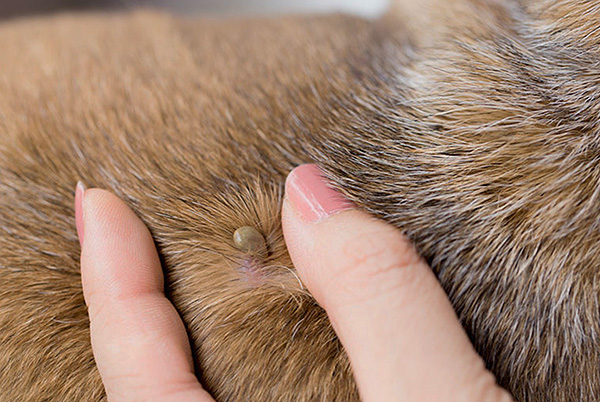
Organizational measures to protect animals from ticks are similar to those for humans:
- Pets are applied to the withers with special means that protect against tick bites - drops, the active substance of which is distributed under the skin throughout the body and repels parasites. Similarly, animals can be sprayed with insecticidal sprays and put on special collars;
- On walks, you should avoid those places where ticks can attack the animal;
- On the walk itself and after it, the pet must be examined, and parasites found should be removed. Removal occurs by the same methods as when a tick is sucked to a person.
It is important that no special suits for animals provide reliable protection against ticks. A dog or cat most often "clings" the parasite to the head, which cannot be covered with anything, and the animal's hair prevents the tissue from tightly fitting to the skin, so that the tick can always get under clothes.
In conclusion, it is worth noting that compliance with the rules of safety in nature allows, if not completely eliminated, then significantly reduce the likelihood of a tick bite. If at the same time you still get vaccinated against tick-borne encephalitis before traveling to the area where this disease is common, then you can relax in nature with a calm heart.
A visual test of the effectiveness of various aerosols and sprays against ticks

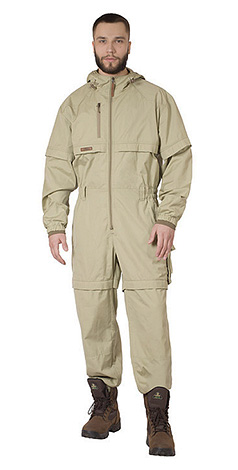
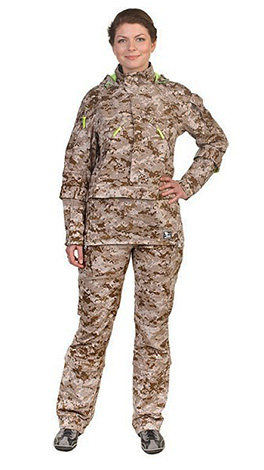
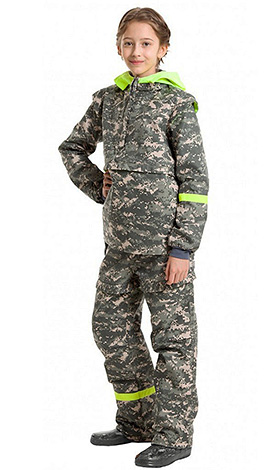

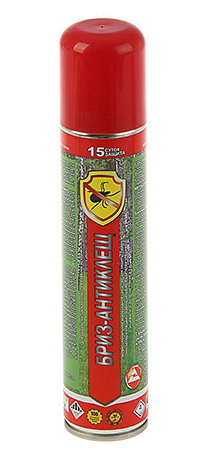
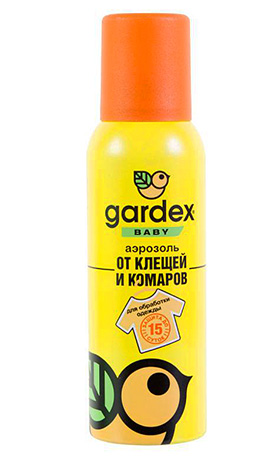



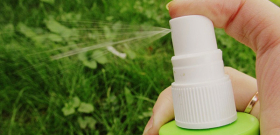
To treat the territory from ticks, the Medilis Ziper liquid is very well suited. Regularly every year I process the plot in the country and my family does not face the problem of ticks.
Where is the best place to buy this product?